Combining empirical knowledge, in silico molecular docking and ADMET profiling to identify therapeutic phytochemicals from Brucea antidysentrica for acute myeloid leukemia
- PMID: 35895695
- PMCID: PMC9328557
- DOI: 10.1371/journal.pone.0270050
Combining empirical knowledge, in silico molecular docking and ADMET profiling to identify therapeutic phytochemicals from Brucea antidysentrica for acute myeloid leukemia
Abstract
Acute myeloid leukemia (AML) is one of the deadly cancers. Chemotherapy is the first-line treatment and the only curative intervention is stem cell transplantation which are intolerable for aged and comorbid patients. Therefore, finding complementary treatment is still an active research area. For this, empirical knowledge driven search for therapeutic agents have been carried out by long and arduous wet lab processes. Nonetheless, currently there is an accumulated bioinformatics data about natural products that enabled the use of efficient and cost effective in silico methods to find drug candidates. In this work, therefore, we set out to computationally investigate the phytochemicals from Brucea antidysentrica to identify therapeutic phytochemicals for AML. We performed in silico molecular docking of compounds against AML receptors IDH2, MCL1, FLT3 and BCL2. Phytochemicals were docked to AML receptors at the same site where small molecule drugs were bound and their binding affinities were examined. In addition, random compounds from PubChem were docked with AML targets and their docking score was compared with that of phytochemicals using statistical analysis. Then, non-covalent interactions between phytochemicals and receptors were identified and visualized using discovery studio and Protein-Ligand Interaction Profiler web tool (PLIP). From the statistical analysis, most of the phytochemicals exhibited significantly lower (p-value ≤ 0.05) binding energies compared with random compounds. Using cutoff binding energy of less than or equal to one standard deviation from the mean of the phytochemicals' binding energies for each receptor, 12 phytochemicals showed considerable binding affinity. Especially, hydnocarpin (-8.9 kcal/mol) and yadanzioside P (-9.4 kcal/mol) exhibited lower binding energy than approved drugs AMG176 (-8.6 kcal/mol) and gilteritinib (-9.1 kcal/mol) to receptors MCL1 and FLT3 respectively, indicating their potential to be lead molecules. In addition, most of the phytochemicals possessed acceptable drug-likeness and absorption, distribution, metabolism, excretion, and toxicity (ADMET) properties. Based on the binding affinities as exhibited by the molecular docking studies supported by the statistical analysis, 12 phytochemicals from Brucea antidysentrica (1,11-dimethoxycanthin-6-one, 1-methoxycanthin-6-one, 2-methoxycanthin-6-one, beta-carboline-1-propionic acid, bruceanol A, bruceanol D, bruceanol F, bruceantarin, bruceantin, canthin-6-one, hydnocarpin, and yadanzioside P) can be considered as candidate compounds to prevent and manage AML. However, the phytochemicals should be further studied using in vivo & in vitro experiments on AML models. Therefore, this study concludes that combination of empirical knowledge, in silico molecular docking and ADMET profiling is useful to find natural product-based drug candidates. This technique can be applied to other natural products with known empirical efficacy.
Conflict of interest statement
The authors have declared that no competing interests exist.
Figures


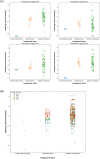
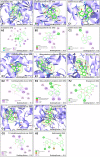
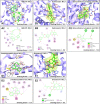
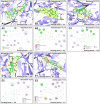
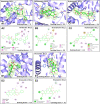

Similar articles
-
FMS-like tyrosine kinase-3 (FLT3) inhibitors with better binding affinity and ADMET properties than sorafenib and gilteritinib against acute myeloid leukemia: in silico studies.J Biomol Struct Dyn. 2022;40(22):12248-12259. doi: 10.1080/07391102.2021.1969286. Epub 2021 Sep 6. J Biomol Struct Dyn. 2022. PMID: 34486940
-
In silico exploration of phytochemicals as inhibitors for acute myeloid leukemia by targeting LIN28A gene: A cheminformatics study.Comput Biol Med. 2024 Dec;183:109286. doi: 10.1016/j.compbiomed.2024.109286. Epub 2024 Nov 5. Comput Biol Med. 2024. PMID: 39504779
-
Identifying novel therapeutic inhibitors to target FMS-like tyrosine kinase-3 (FLT3) against acute myeloid leukemia: a molecular docking, molecular dynamics, and DFT study.J Biomol Struct Dyn. 2024 Jan-Feb;42(1):82-100. doi: 10.1080/07391102.2023.2192798. Epub 2023 Mar 30. J Biomol Struct Dyn. 2024. PMID: 36995071
-
A comprehensive review of phytochemical approaches in treatment of acute myeloid leukemia: Associated pathways and molecular mechanisms.Chin Herb Med. 2024 Nov 26;17(1):41-55. doi: 10.1016/j.chmed.2024.11.010. eCollection 2025 Jan. Chin Herb Med. 2024. PMID: 39949810 Free PMC article. Review.
-
Phytochemicals in Drug Discovery-A Confluence of Tradition and Innovation.Int J Mol Sci. 2024 Aug 13;25(16):8792. doi: 10.3390/ijms25168792. Int J Mol Sci. 2024. PMID: 39201478 Free PMC article. Review.
Cited by
-
Hydnocarpin, a Natural Flavonolignan, Induces the ROS-Mediated Apoptosis of Ovarian Cancer Cells and Reprograms Tumor-Associated Immune Cells.Antioxidants (Basel). 2025 Jul 10;14(7):846. doi: 10.3390/antiox14070846. Antioxidants (Basel). 2025. PMID: 40722951 Free PMC article.
-
Application of Drug Repurposing-Based Precision Medicine Platform for Leukaemia Patient Treatment.Adv Exp Med Biol. 2023;1410:115-126. doi: 10.1007/5584_2022_744. Adv Exp Med Biol. 2023. PMID: 36289161 Review.
-
Canthin-6-Ones: Potential Drugs for Chronic Inflammatory Diseases by Targeting Multiple Inflammatory Mediators.Molecules. 2023 Apr 11;28(8):3381. doi: 10.3390/molecules28083381. Molecules. 2023. PMID: 37110614 Free PMC article. Review.
-
Triazole-Estradiol Analogs Induce Apoptosis and Inhibit EGFR and Its Downstream Pathways in Triple Negative Breast Cancer.Molecules. 2025 Jan 30;30(3):605. doi: 10.3390/molecules30030605. Molecules. 2025. PMID: 39942711 Free PMC article.
-
In silico and in vitro study of FLT3 inhibitors and their application in acute myeloid leukemia.Mol Med Rep. 2024 Dec;30(6):229. doi: 10.3892/mmr.2024.13353. Epub 2024 Oct 11. Mol Med Rep. 2024. PMID: 39392050 Free PMC article.
References
-
- Collaborators. Global, regional, and national incidence, prevalence, and years lived with disability for 310 diseases and injuries, 1990–2015: a systematic analysis for the Global Burden of Disease Study 2015. Lancet (London, England). 2016;388: 1545–1602. doi: 10.1016/S0140-6736(16)31678-6 - DOI - PMC - PubMed
-
- Wang H, Naghavi M, Allen C, Barber RM, Bhutta ZA, Carter A, et al.. Global, regional, and national life expectancy, all-cause mortality, and cause-specific mortality for 249 causes of death, 1980–2015: a systematic analysis for the Global Burden of Disease Study 2015. Lancet. 2016;388: 1459–1544. doi: 10.1016/S0140-6736(16)31012-1 - DOI - PMC - PubMed
-
- Society AC. American Cancer Society. Cancer Facts & Figures 2020. American Cancer Society. 2020. pp. 1–52. http://www.cancer.org/acs/groups/content/@nho/documents/document/caff200...
-
- Döhner H, Estey EH, Amadori S, Appelbaum FR, Büchner T, Burnett AK, et al.. Diagnosis and management of acute myeloid leukemia in adults: recommendations from an international expert panel, on behalf of the European LeukemiaNet. Blood. 2010;115: 453–474. doi: 10.1182/blood-2009-07-235358 - DOI - PubMed
Publication types
MeSH terms
Substances
LinkOut - more resources
Full Text Sources
Medical
Miscellaneous

